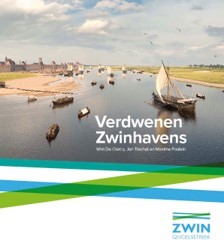De Clercq, W., Trachet, J. & Poulain, M. 2021. Zwinhavens (Brugge: Provincie West-Vlaanderen): https://shop.westtoer.be/nl/product/boek-verdwenen-zwinhavens

De Clercq, W., Trachet, J. & Poulain, M. 2021. Zwinhavens (Brugge: Provincie West-Vlaanderen): https://shop.westtoer.be/nl/product/boek-verdwenen-zwinhavens

Trachet J. 2020. Uitdagingen klimaatopwarming niet nieuw: grote stormvloed veranderde onze kuststreek in 1134, Knack, 1 januari 2020: https://www.knack.be/nieuws/uitdagingen-klimaatopwarming-niet-nieuw-grote-stormvloed-veranderde-onze-kuststreek-in-1134/
Trachet J. 2019. Verdwenen en Verzwonden. Haven-gerelateerde toponiemen langsheen in het Zwin, Handelingen van de Koninklijke Commissie voor Toponymie en Dialectologie, vol. 91, 119-132.
Trachet J. 2019. Monnikerede and Hoeke: a topographical analysis of two deserted late medieval harbours in Belgium. Inland harbours in Central Europe: nodes between Northern Europe and the Mediterranean Sea, Verlag des Römisch-Germanischen Zentralmuseums. Band 38 p. 209-220.
De Clercq, W., Trachet, J., Poulain, M. & de Ruijsscher, D. 2020. Een archeologische evaluatie, waardering en ruimtelijke afbakening van de verdwenen zwinhavens Hoeke en Monnikerede (gemeente Damme, provincie West-Vlaanderen). Rapport voor het Agentschap Onroerend Erfgoed i.v.m. de bescherming van de Zwinhavens als archeologische monumenten: https://oar.onroerenderfgoed.be/item/5661
De Clercq, W., Biernacka, P., de Ruijsscher, D., Poulain, M. & Trachet, J. 2020. ‘Ysere ghesleghen niew of hout’: Interdisciplinair onderzoek naar de ijzerproductie in de laat-middeleeuwse Zwinhaven te Hoeke (W.-Vl.), Archaeologia Mediaevalis 43, 22-24: https://archaeologiamediaevalis.be/drupal_e/?q=nl/welkom
De Clercq, W. de Ruijsscher, D. Leloup., W., Dombrecht, K., Dumolyn, J., Poulain, M. & Trachet, J. 2021. Een proefopgraving in Monnikerede. Nieuwe inzichten in de chronologie en topografie van het Zwinhavenstadje. (Damme, W.-Vl.), Archaeologia Mediaevalis 44, 43-47: https://archaeologiamediaevalis.be/drupal_e/?q=nl/welkom
Vermeersch, J., De Clercq, W., Demey, D., de Ruijsscher, D., Poulain, M. & Trachet, J. 2022. Scheepsarcheologische resten van laatmiddeleeuws Hoeke, gemeente Damme (W.-Vl.), Archaeologia Mediaevalis 45, 135-138: https://archaeologiamediaevalis.be/drupal_e/?q=nl/welkom
De Clercq, W., Demey, D., de Ruijsscher, D., Poulain, M., Trachet, J., Bogemans, F., André, C. & Vermeersch, J. 2022. Een scheepshouten kadeplatform in de laatmiddeleeuwse haven te Hoeke (W.-Vl.), Archaeologia Mediaevalis 45, 47-49: https://archaeologiamediaevalis.be/drupal_e/?q=nl/welkom
De Clercq, W., Demey, D., de Ruijsscher, D., Poulain, M., Trachet, J., Bogemans, F., André, C. & Vermeersch, J. 2022. De vorming van de Zwingeul en eerste bedijking in de laatmiddeleeuwse haven te Hoeke. Een eerste bilan (W.-Vl.), Archaeologia Mediaevalis 45, 45-46: https://archaeologiamediaevalis.be/drupal_e/?q=nl/welkom